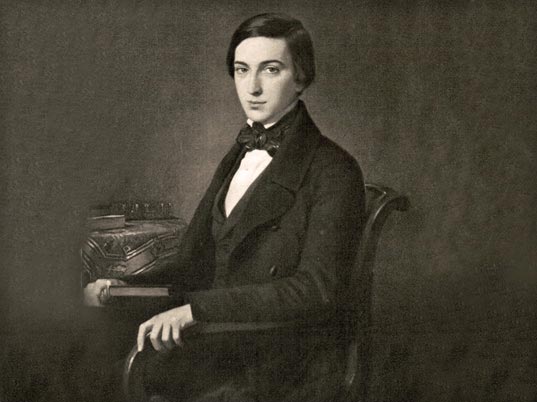GENERAL DETAILS
Pursuant to article 10 of Spanish Act 34/2002, of 11 July, on Information Society and Electronic Commerce Services (in Spanish, LSSI-CE), we provide you the following details:
The registered office of BIBLIOTECA Y ARCHIVO FRANCISCO DE ZABALBURU, C.B. is in C/ Marqués del Duero 7, 28001 - Madrid. It holds Spanish Tax ID E87179396.
The website www.archivozabalburu.com features information about the library and the historical archive created by Francisco de Zabálburu.
Its main purpose is to offer the general public the information related to the company, its activities and services.
PRIVACY POLICY
Pursuant to the provisions of Spanish Organic Law 15/1999, of 13 December, on Personal Data Protection (in Spanish, LOPD), we inform users that all of the details they provide shall be incorporated to a file, created and controlled by BIBLIOTECA Y ARCHIVO FRANCISCO DE ZABALBURU, C.B.
The confidentiality of their personal details will always be observed. Said details shall only be used to manage the services offered, process the requests they send, carry out administration tasks, and to send technical, commercial or advertising information by ordinary or electronic methods.
Users may exercise their rights of opposition, rectification or cancellation by writing to the registered office of the company located in Marqués del Duero 7, 28001 - Madrid, sending an email to info@archivozabalburu.com or contacting us at +34 915 769 066.
TERMS AND CONDITIONS OF USE
The terms and conditions of access and use of this website shall be governed by the legislation in force and by the principle of good faith. Users undertake to use the website correctly. Behaviours which are against the law or the rights or interests of third parties are not allowed.
Being a user of the website www.archivozabalburu.com implies having read and accepted these terms and conditions and the extension thereof by the applicable regulations. If you do not agree for any reason with these terms and conditions, please stop using this website.
Any notice and/or claim shall only be valid if sent in writing and/or via recorded delivery.
LIABILITIES
BIBLIOTECA Y ARCHIVO FRANCISCO DE ZABALBURU, C.B. shall not be held liable for the information or content stored in forums, social networks or any other medium enabling third parties to independently publish content on the website of the supplier.
However, taking into account that articles 11 and 16 of LSSI-CE, BIBLIOTECA Y ARCHIVO FRANCISCO DE ZABALBURU, C.B. undertakes to remove or block the content that may affect or breach the national or international legislation, third party rights or the public moral and order.
Furthermore, the company shall not be held liable for the damages arising from failures or wrong settings of the software installed in the computer of the user. Any liability arising from any technical incidence or failure ocurred when the user connects to the Internet shall be excluded. Likewise, the company cannot guarantee that there will be no interruptions or errors when accessing the website.
Moreover, BIBLIOTECA Y ARCHIVO FRANCISCO DE ZABALBURU, C.B. reserves the right to update, modify or delete the information featured on the website, together with the settings or presentation thereof, at any time, without assuming any liability.
We inform you that any price that you may see on our website is only for information purposes. If users want to find out the exact price or if there is any offer applied to the product, they must go to any of the physical stores of BIBLIOTECA Y ARCHIVO FRANCISCO DE ZABALBURU, C.B.
INTELLECTUAL AND INDUSTRIAL PROPERTY
BIBLIOTECA Y ARCHIVO FRANCISCO DE ZABALBURU, C.B. is the holder of all the rights over the digital publication software and of all the intellectual and industrial property rights referred to the contents they include, except for rights over public products and services that are not owned by this company.
No material published on this website may be reproduced, copied or published without the approval in writing of BIBLIOTECA Y ARCHIVO FRANCISCO DE ZABALBURU, C.B.
All the information received on the website, such as comments, suggestions or ideas, shall be considered as assigned to BIBLIOTECA Y ARCHIVO FRANCISCO DE ZABALBURU, C.B. free of charge. ANY information that cannot be processed as such should not be sent.
All of the products and services herein that ARE NOT owned by BIBLIOTECA Y ARCHIVO FRANCISCO DE ZABALBURU, C.B. are trademarks of their respective owners and are recognised as such by our company. They only appear on the BIBLIOTECA Y ARCHIVO FRANCISCO DE ZABALBURU, C.B. website for promotional and information collection purposes. Said owners may request the amendment or removal of the information they own.
APPLICABLE LAW AND JURISDICTION
These general terms and conditions shall be governed by Spanish legislation. Any dispute that may arise related to the website or the activity thereof shall be submitted to the Courts of the city of Madrid. The users expressly waive any other jurisdiction to which they may be entitled.
COOKIES POLICY
BIBLIOTECA Y ARCHIVO FRANCISCO DE ZABALBURU, C.B. on its behalf or on behalf of a third party hired to provide measurement services, may use cookies when users browse the website. Cookies are files sent to the browser through a web service to record the activities of the user during browsing time.
The cookies used are only linked to an anonymous user and the computer thereof, and they do not provide the personal details of the user.
By using cookies, the server where the website is stored may recognise the browser used by the user to make the browsing experience easier. Cookies are also used to measure the audience and traffic parameters, control the process and the number of entries.
Users may set their browser to receive notifications upon cookies collection and to avoid the installation of cookies on their computer. For further information, please read the instructions and guidelines of your browser.
The user, or the third party acting on behalf of the user, does not need to permit the installation of the cookies sent to the website. However, the user may have to login to each of the services that require a previous login.
In any case, cookies are temporary to make their subsequent transmission more effective. Cookies will never be used to collect personal information.

